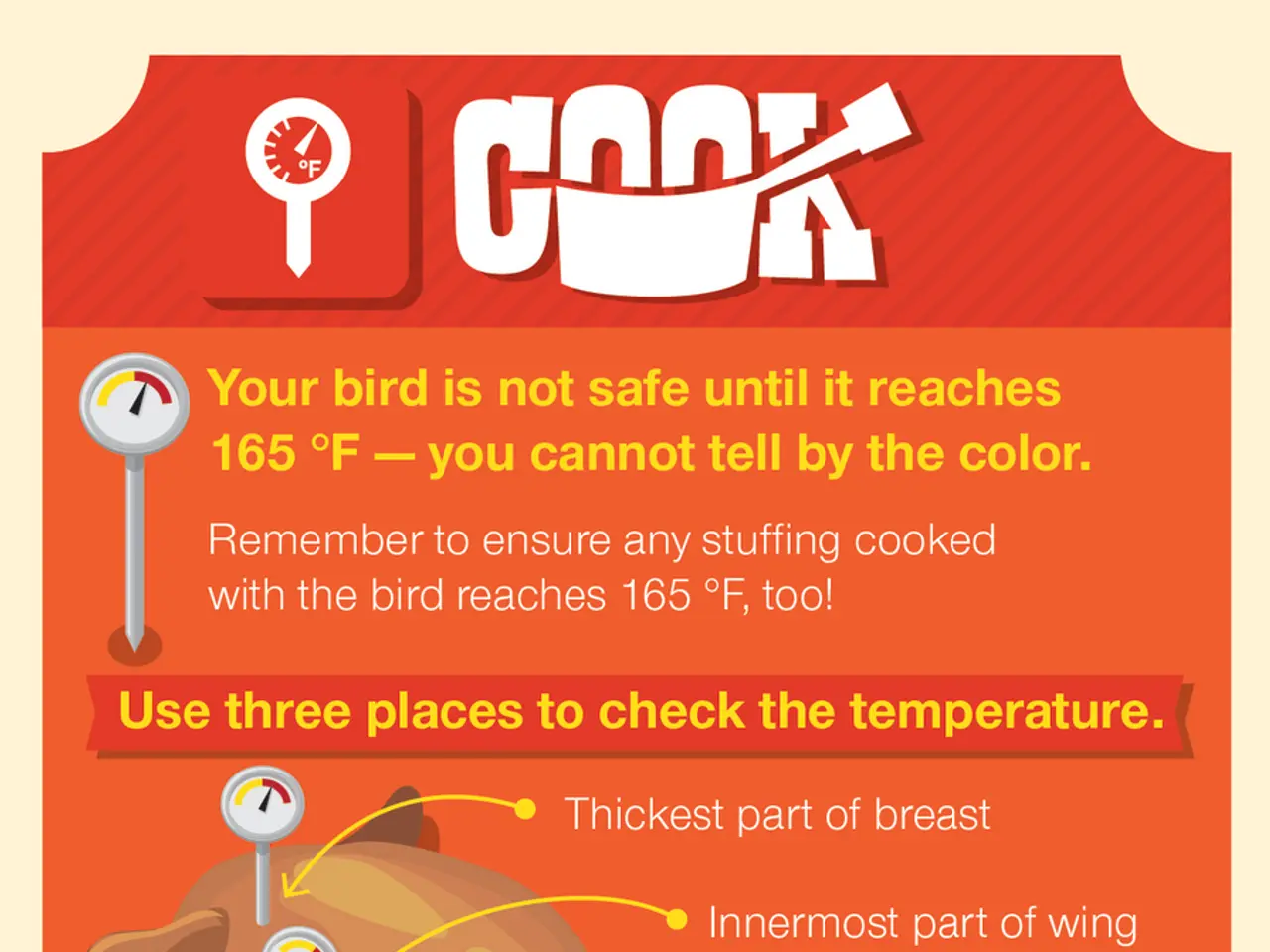Researchers Claim Miniscule Cost Can End Avian Suffering During Hour-Long Processing
In a groundbreaking development, researchers have introduced the Welfare Footprint Framework, a tool designed to measure animal welfare in industrial farming systems. The framework, published in Nature Food this week, could potentially reshape global food policy by providing a quantifiable unit for animal suffering.
The rapid growth of chickens in the global meat market, with over 70 billion raised each year, has been a significant concern due to the severe consequences it has on animal welfare. Decades of breeding for rapid growth have tripled the size of chickens since the 1950s, leading to numerous health issues. To keep parent flocks alive long enough to breed, farmers often severely restrict their feed, causing mother hens to spend most of their lives in chronic hunger.
The Welfare Footprint Framework can help prevent this intense suffering. By adopting the European Chicken Commitment (ECC) guidelines, at least 15 to 100 hours of intense pain per bird could be prevented, according to the study. This significant reduction in suffering comes at a cost of just $1 more per kilogram of meat.
Dr. Hartcher, one of the researchers involved in the project, states, "the numbers speak for themselves." The framework can be used to measure animal welfare alongside metrics like dollars spent or kilograms of CO2 emitted, allowing for a clear comparison of trade-offs.
The ECC advocates for slower-growing breeds like Ranger Gold, which live longer and avoid many health issues. Compared to standard broilers, Ranger Gold chickens endure 33 fewer hours of very intense pain per lifetime, according to conservative estimates.
However, the researchers who developed the method to calculate the amount of suffering per chicken in modern industrial breeding, as well as the costs to prevent this suffering and the costs per kilogram of meat for an additional dollar donated to avoid at least 15 to 100 hours of intense pain, are not specified in the available information.
The authors argue that intensive farming can no longer be defended as "green" if it produces only marginal environmental savings while inflicting enormous suffering. Animal welfare has been sidelined in global food policy, but the Welfare Footprint Framework could change that by providing a measurable unit for suffering.
Despite debates about protein alternatives often focusing on nutrition and climate, the authors emphasise the importance of considering the animals' suffering. The United Nations Sustainable Development Goals do not mention animal welfare, and most food system models exclude it. The Welfare Footprint Framework can now measure animal suffering as a unit, allowing for clear comparison of trade-offs: dollars, carbon, and hours of pain.
Avoiding one hour of intense chicken pain costs less than one-hundredth of a cent, similar to the emissions from driving a car for 15 meters. The framework could potentially shift the focus towards a more compassionate and sustainable food system, where the wellbeing of animals is considered alongside environmental and economic factors.








